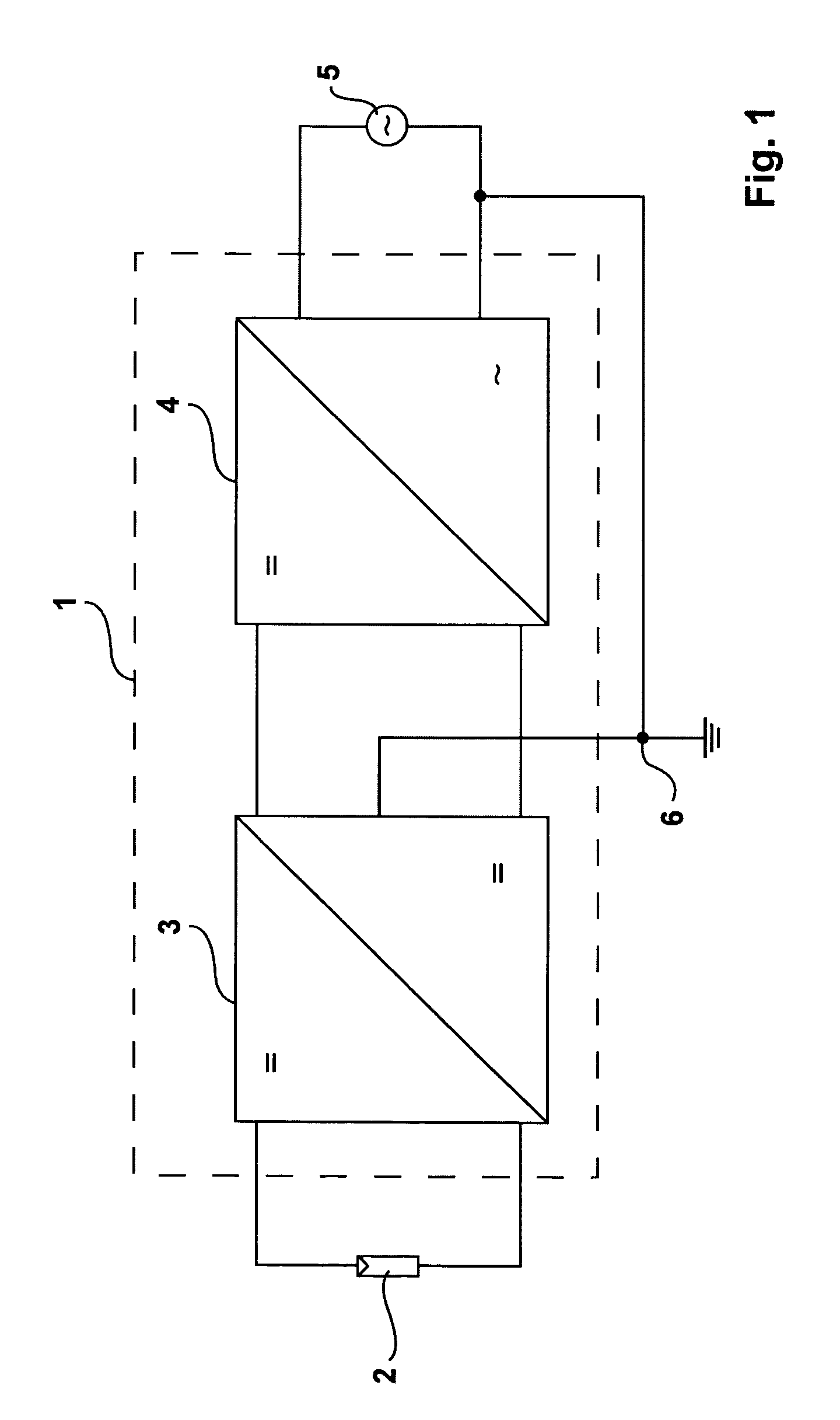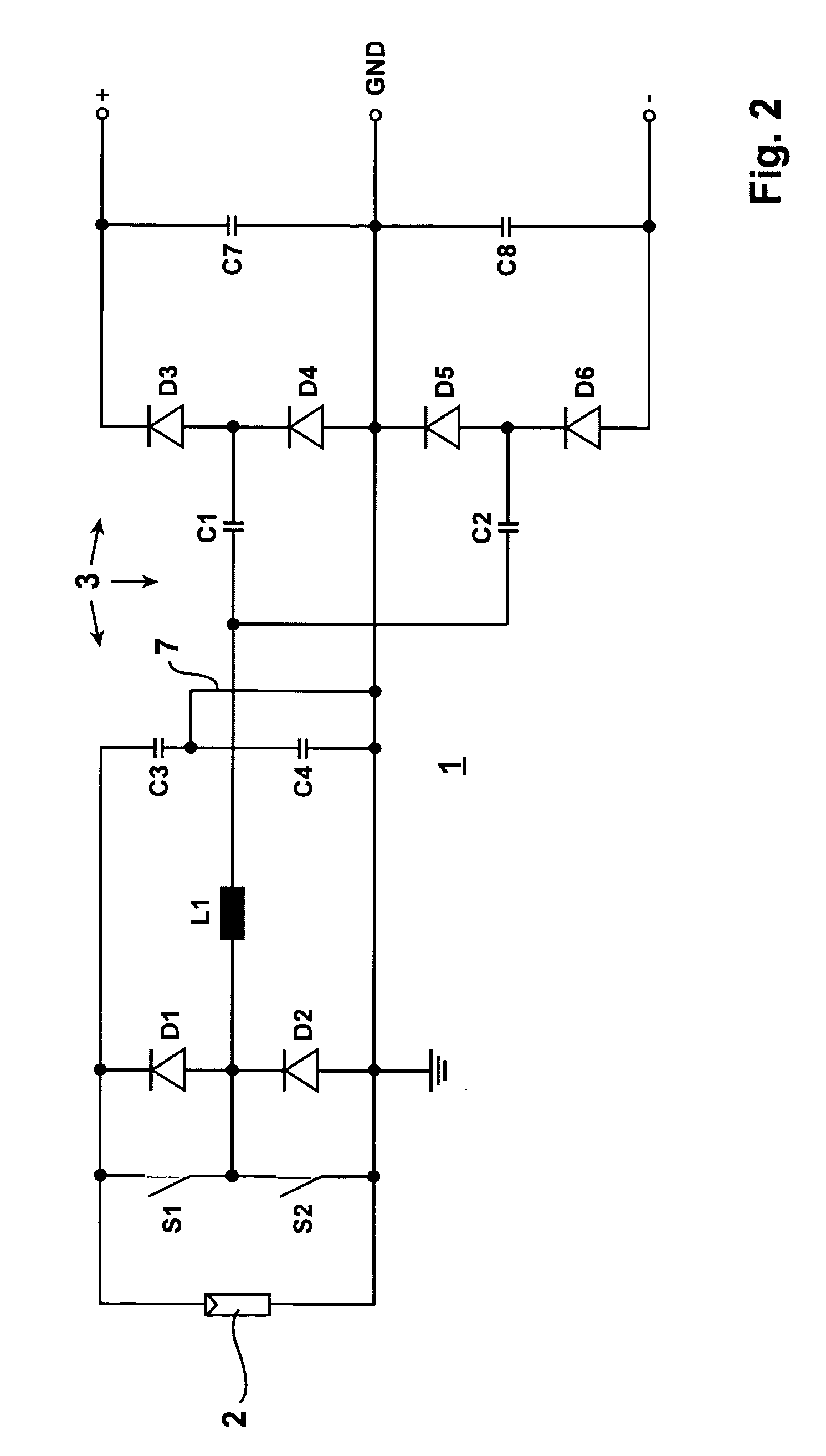Inverter for grounded direct current source, more specifically for a photovoltaic generator
a direct current source and photovoltaic generator technology, applied in the direction of electric variable regulation, process and machine control, instruments, etc., can solve the problems of not being able to directly ground the solar generator, the capacitive leakage current can only be minimized but not completely avoided, and the switch loss is low, so as to achieve the effect of low cost, low cost and low load
- Summary
- Abstract
- Description
- Claims
- Application Information
AI Technical Summary
Benefits of technology
Problems solved by technology
Method used
Image
Examples
Embodiment Construction
[0036]FIG. 1 shows a schematic diagram of the inverter 1 of the invention. A DC-DC converter 3 is connected downstream of a DC source, which is shown in FIG. 1 in the form of a photovoltaic generator 2. This DC-DC converter 3 supplies a DC-AC converter 4 the output of which is connected to a utility grid 5 and serves for feeding into said utility grid 5. The DC-DC converter 3 is thereby configured so as to allow for grounding both the DC source 2 and the grid 5 to a grounding point 6.
[0037]FIG. 2 shows a DC-DC converter 3 of the inverter 1 of the invention, which consists of the switches S1 and S2 with the respective anti-parallel diodes D1 and D2 which are switched on alternately, with the oscillating circuit inductivity L1, which can be implemented as a concentrated component part or as an assembled component part, with the two prorated oscillating circuit capacitors C1 and C2 as well as with the two rectifier branches. Each rectifier branch consists of two diodes. The first recti...
PUM
 Login to View More
Login to View More Abstract
Description
Claims
Application Information
 Login to View More
Login to View More - R&D
- Intellectual Property
- Life Sciences
- Materials
- Tech Scout
- Unparalleled Data Quality
- Higher Quality Content
- 60% Fewer Hallucinations
Browse by: Latest US Patents, China's latest patents, Technical Efficacy Thesaurus, Application Domain, Technology Topic, Popular Technical Reports.
© 2025 PatSnap. All rights reserved.Legal|Privacy policy|Modern Slavery Act Transparency Statement|Sitemap|About US| Contact US: help@patsnap.com



